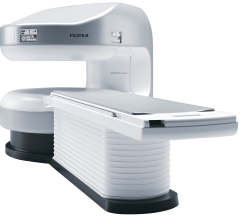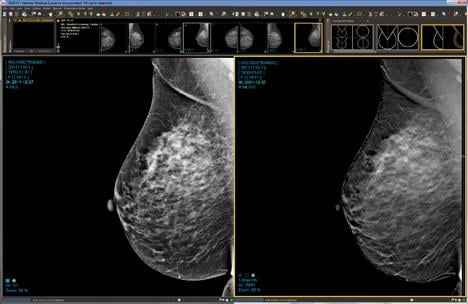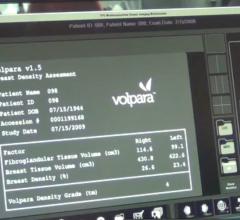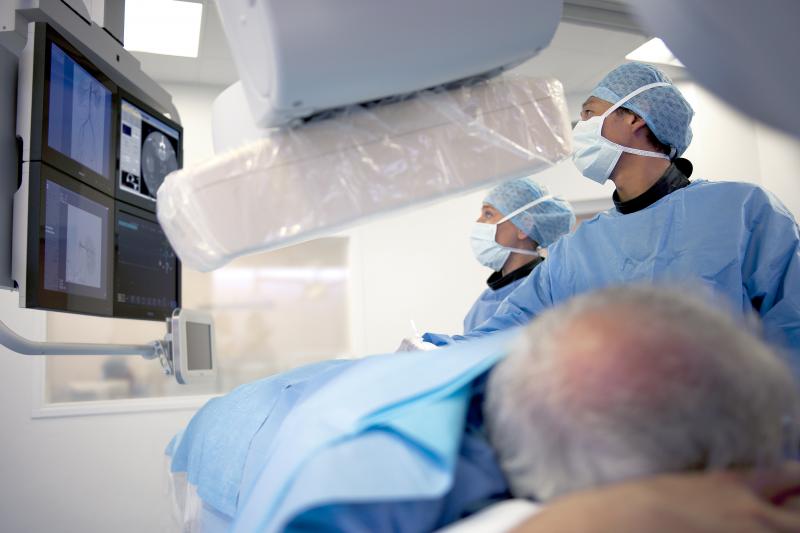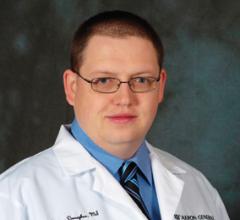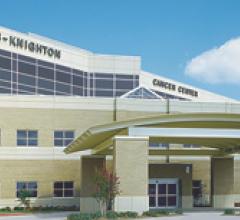September 5, 2014 — The number of uninsured is expected to decline by nearly half from 45 million in 2012 to 23 million by 2023 as a result of the coverage expansions associated with the Affordable Care Act (ACA), according to a report from the Centers for Medicare & Medicaid Services (CMS) Office of the Actuary. The report is published in Health Affairs.
To support its humanitarian work the Field Hospital of the Portuguese army opted for the OR technology mobile complete X-ray solution, the Amadeo M-DRw with wireless flat panel detector.
Management of Sapheneia LLC and Sapheneia Commercial Products AB won the final two cases in Swedish Appeals Court.
Fujifilm’s APERTO Lucent is a 0.4T mid-field, open MRI system addressing today’s capability and image quality needs ...
Telemis announced another record year of trading with revenues increasing by more than 6 percent.
September 4, 2014 — Healthcare professionals will be able to access information about the latest and most complete oncology guidelines available at the point of care following an agreement between EBSCO Health and the National Comprehensive Cancer Network (NCCN). Information from NCCN will be summarized along with other evidence and guidelines in the content available from the clinical reference tool DynaMed.

SPONSORED CONTENT — Fujifilm’s latest CT technology brings exceptional image quality to a compact and user- and patient ...
September 4, 2014 — Isis Innovation, the technology transfer arm at the University of Oxford in the United Kingdom, and the Centre for Imaging Technology Commercialization (CIMTEC) in Canada have announced a partnership to jointly develop and test a new enhanced ultrasound imaging technology.
SPONSORED CONTENT — Fujifilm’s latest CT technology brings exceptional image quality to a compact and user- and patient ...
Westerners want neatly drawn lines, simple demarcations, absolutes. In some cases, the lines are apparent. Others are not. Continents are easy to distinguish visibly from oceans. The boundaries between countries are not.
September 4, 2014 — Based on its recent analysis of the breast imaging solutions market, Frost & Sullivan recognized Volpara Solutions with the 2014 North American Frost & Sullivan Award for Technology Innovation Leadership.
Data from a new study of more than 170,000 examinations using 3-D mammography (breast tomosynthesis) screening technology finds significantly more invasive cancers than a traditional 2-D mammogram. The researchers also found that 3-D mammography reduces the number of women called back for unnecessary testing due to false alarms. The study was published in the June 25, 2014, issue of the Journal of the American Medical Association (JAMA).
SPONSORED CONTENT — EnsightTM 2.0 is the newest version of Enlitic’s data standardization software framework. Ensight is ...
Did you know that medical data on 20,000 people could be exposed to abuse today? According to the U.S. Department of Health & Human Services (HSS), that is the number of people whose protected health information was breached per day on average in 2013. While healthcare practitioners may not realize the value of the data in their care, criminals certainly do. Clinicians and nurses may feel wary of security measures that might slow them down, but there are ways to improve security that will not cost precious moments in an emergency situation. Being lax with security can have a long-lasting impact on all of your patients, not just those with emergencies.
One of the emerging health information technology (HIT) initiatives being considered and evaluated by providers across the country is the transformation and modernization of medical imaging strategy — or subsequently —architecture. The promise of a vendor neutral archive (VNA) or an equivalent medical image-object management solution is one of interoperability and rapid, simplified access to all medical imaging assets. This is further enhanced by the ability of the platform to act as a disaster recovery or the backbone of a health information exchange (HIE) with image management capabilities for patient data.
Angiographic imaging system vendors have developed several new technologies to address emerging cath lab trends, including the need to reduce radiation dose, improve image quality and enable advanced procedural image guidance. All three of these points have become increasingly important as more complex procedures are attempted in interventional cardiology cath labs and hybrid ORs. These procedures include transcatheter aortic valve replacement (TAVR), mitral clip valve repairs, left atrial appendage (LAA) occlusions, atrial and ventricular septal defect closures, and new interventions for both electrophysiology (EP) and heart failure.
Did you know that approximately one-third of all the data in world is created by the healthcare industry and that ...
As technology continues to advance for all diagnostic imaging modalities, it sometimes reminds me of a race between vendors to build a better mouse trap. The main issue between cardiac echo, computed tomography (CT), magnetic resonance imaging (MRI), nuclear (SPECT and PET) and invasive angiography is that each has its strengths and weaknesses. When one test falls short, another is used to add diagnostic information, but it also adds time and cost.
Incidents of cancer are on the rise globally. According to a press release from the World Health Organization’s (WHO) International Agency for Research on Cancer (IARC), “In 2012, the worldwide burden of cancer rose to an estimated 14 million new cases per year, a figure expected to rise to 22 million annually in the next decade.” As the numbers increase around the world, research continues to unveil unconventional options for cancer treatment. Over the past five years, proton therapy has emerged as one popular choice. Hailed by some as the Rolls Royce of radiation oncology, the technology’s precision and accuracy, along with its ability to prevent damage to critical structures and healthy tissues, has made it a technology that many vendors and healthcare facilities are actively investing in.
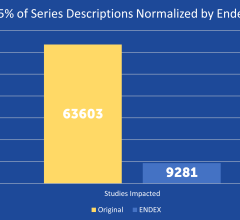
SPONSORED CONTENT — EnsightTM 2.0 is the newest version of Enlitic’s data standardization software framework. Ensight is ...
A strong sense of purpose and high level of confidence encompasses the mindset of the American Society of Radiologic Technologists’ (ASRT) government relations department. This attitude has been especially important this year as the department has been extremely busy providing legislative counsel to states pursuing radiologic technology licensure and working the halls of Congress to push for reimbursement for radiologist assistant (RA) services. It also continues to seek basic minimum education standards for radiologic technologists who perform services for patients within the Medicare framework.
Akron General Health System, found within the heart of Ohio, has implemented the RayStation treatment planning system from RaySearch Laboratories, AB. This case study describes how they are using Python scripting to streamline their workflow while providing continuity during the planning process. The treatment planning system supports the integration of automated scripts that allows users to interact with objects in the patient database and present them or analyze them to develop custom output and reports. Jeremy Donaghue, chief physicist, shares three scripts that have been clinically implemented, having a positive impact on their facility.
Arc-based radiation therapy continues to gain ground as physicians opt for treatment options that not only are more precisely tailored to each tumor site, but also delivered in fewer visits, which is significantly more convenient for both patients and cancer centers. With a variety of radiation therapy techniques available, from intensity-modulated radiation therapy (IMRT) and whole-body irradiation (WBI) to proton therapy and stereotactic body radiation therapy (SBRT), cancer centers around the country are now, more than ever, able to offer patients a more effective solution for targeting and treating their diseases.
September 3, 2014 — IBA (Ion Beam Applications SA) announced that Willis-Knighton Cancer Center in Shreveport, La., and IBA have completed acceptance testing of the first ProteusONE system ahead of schedule, opening the way to final commissioning and patient treatment with the most advanced compact image-guided IMPT (intensity-modulated proton therapy) solution.
A growing volume and variety of patient information created a big challenge for leaders at CHRISTUS Health. “We needed to make patient information readily available to clinicians while also managing it within a long-term storage solution outside the departmental picture archiving and communication system (PACS),” said Lynn Gibson, vice president and CTO at CHRISTUS.
New research published in the June issue of Global Heart, the journal of the World Heart Federation, shows that there are no significant differences in the incidence or severity of atherosclerotic disease (narrowing of the arteries with fatty deposits) between ancient and modern people, proving that atherosclerosis is not just a disease of modern times. The journal included three articles [1,2,3] on the finding of the Horus study, which used computed tomography (CT) scans from ancient mummies to compare arterial calcification caused by Horus atherosclerosis.


 September 05, 2014
September 05, 2014 

